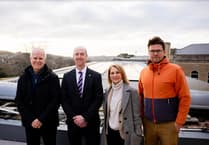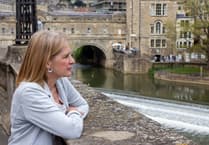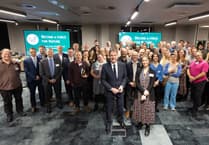Solar panel canopies for car parks are among ideas considered by Bath and North East Somerset Council as they look for ways to generate renewable energy.
The Council is aiming to generate 12MW of renewable power across the properties they own, and to lead companies and communities in developing 300MW of renewable energy across B&NES by 2030.
Solar canopies can keep cars in the shade while using the sunlight to generate electricity. A Council officer said: “It’s something the park and ride car parks lend themselves to.
“We are just revisiting the feasibility of those as the unit prices have come down from when it was first explored.”
The Council has already installed rooftop solar panels on four Council properties: Keynsham Civic Centre, Charlton House care home, Newbridge Primary School, and office building Lewis House, with more installations currently underway.
Further solar panels in the pipeline include planned rooftop panels on Odd Down Sports Ground and the new Keynsham Recycling Hub, which has the largest expected power output of anything currently planned, with a peak output of 783KW.
Asked by Councillor Grant Johnson (Paulton) why progress was not being made more quickly, cabinet member for climate, Sarah Warren said: “It’s taken some time to get the right officers in place, to do the planning, to create the links with Western Power Distribution, and to get the policy framework in place. So that’s what we’ve been busily working away at over the last three years.
“And now we are at that place where the policies are coming into line and we have the staff in post — and also also it’s about the technology coming down in price to a more affordable level.
“I think we are getting to a place where we should be able to move a lot faster.
The 12MW the Council is aiming to generate reflects the energy consumption of the council estate. The Bath and North East Somerset as a whole, however, will need to generate 300MW of renewable energy to meet the council’s aim for the area to achieve net zero by 2030.
This 300MW target is for all energy generation across the district, whether by the council, individuals, companies, or community groups.
Councillor Paul Crossley asked if faith groups could install solar panels on their “acres of roofs.” An officer said: “We have been in touch with the dioceses and so on. You’re right, they have got capacity and they’re very interested in doing it. And some of them are already doing it.”
The question of whether there was a way to utilise the heat beneath Bath was raised by councillor Lisa O’Brien but the officer responded: “No, it’s 43 degrees which is not as hot as you may think. You need 60 degrees for a wet radiator system, for example.”
Water from the hot springs is used for underfloor heating in Bath Abbey but plans to include further places such as the Guildhall in this were ruled out during installation.
Private solar panels are currently generating approximately 40MW towards this 300MW target, twice as much as in early 2019. Community energy groups are also contributing, such as Chelwood Community Energy, a cooperative solar farm with a 5MW output, while others such as Keynsham Community Energy are not currently generating power but have projects planned.
The council officer said: “The 300MW target is an indicative target based on modelling and sits alongside all the other things we need to do to decarbonise the economy in Bath and North East Somerset. So 300MW doesn’t achieve net zero on its own. It’s a renewable energy contribution to it.
“We also have to decarbonise, making buildings more energy efficient, making sure that new builds are all net zero, and obviously all of the transport works that contribute to reducing carbon emissions that are all part of the overall plan.”
Although the national target for net zero is 2050, Bath and North East Somerset Council committed to achieving this by 2030 when they declared a Climate Emergency in 2019.




